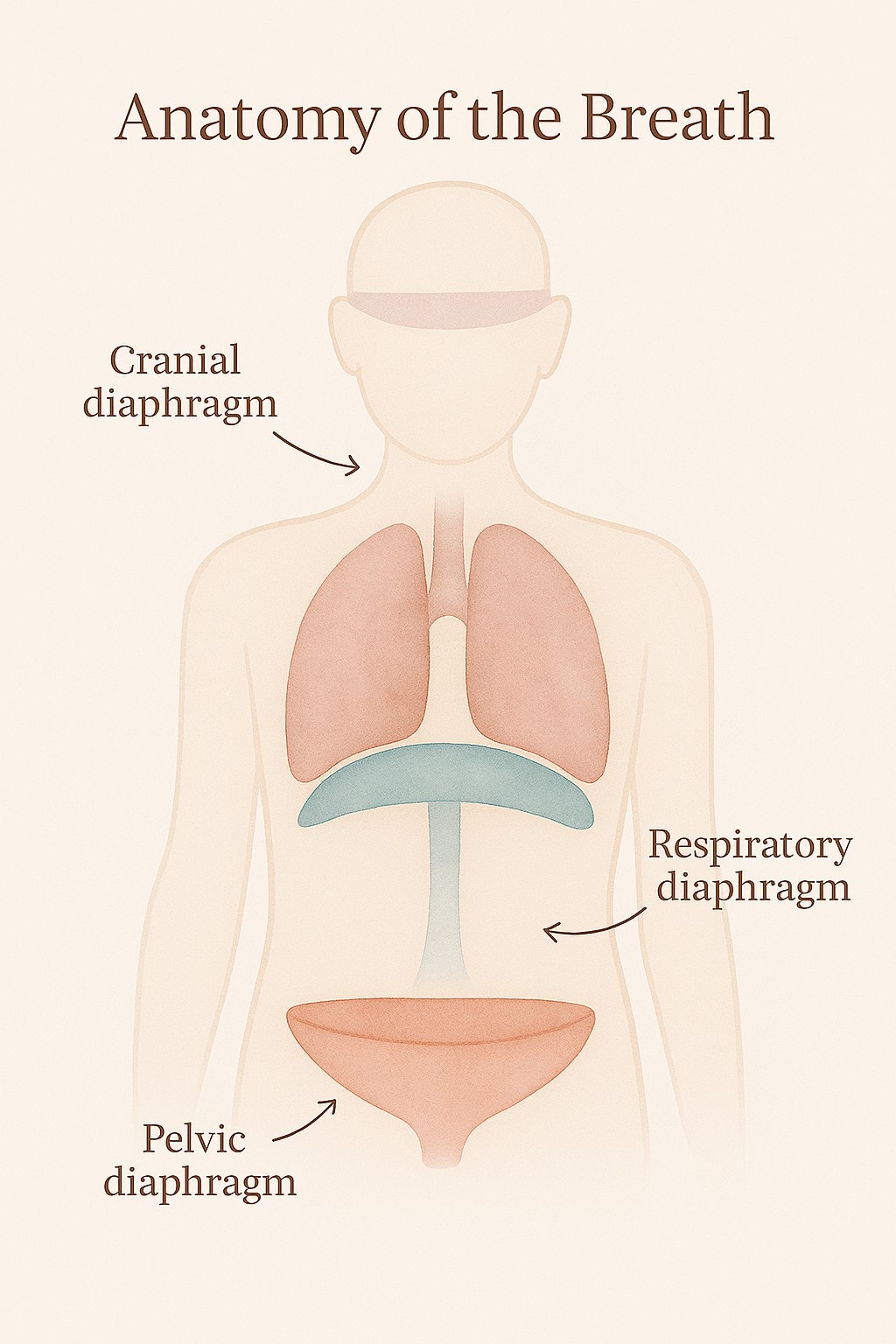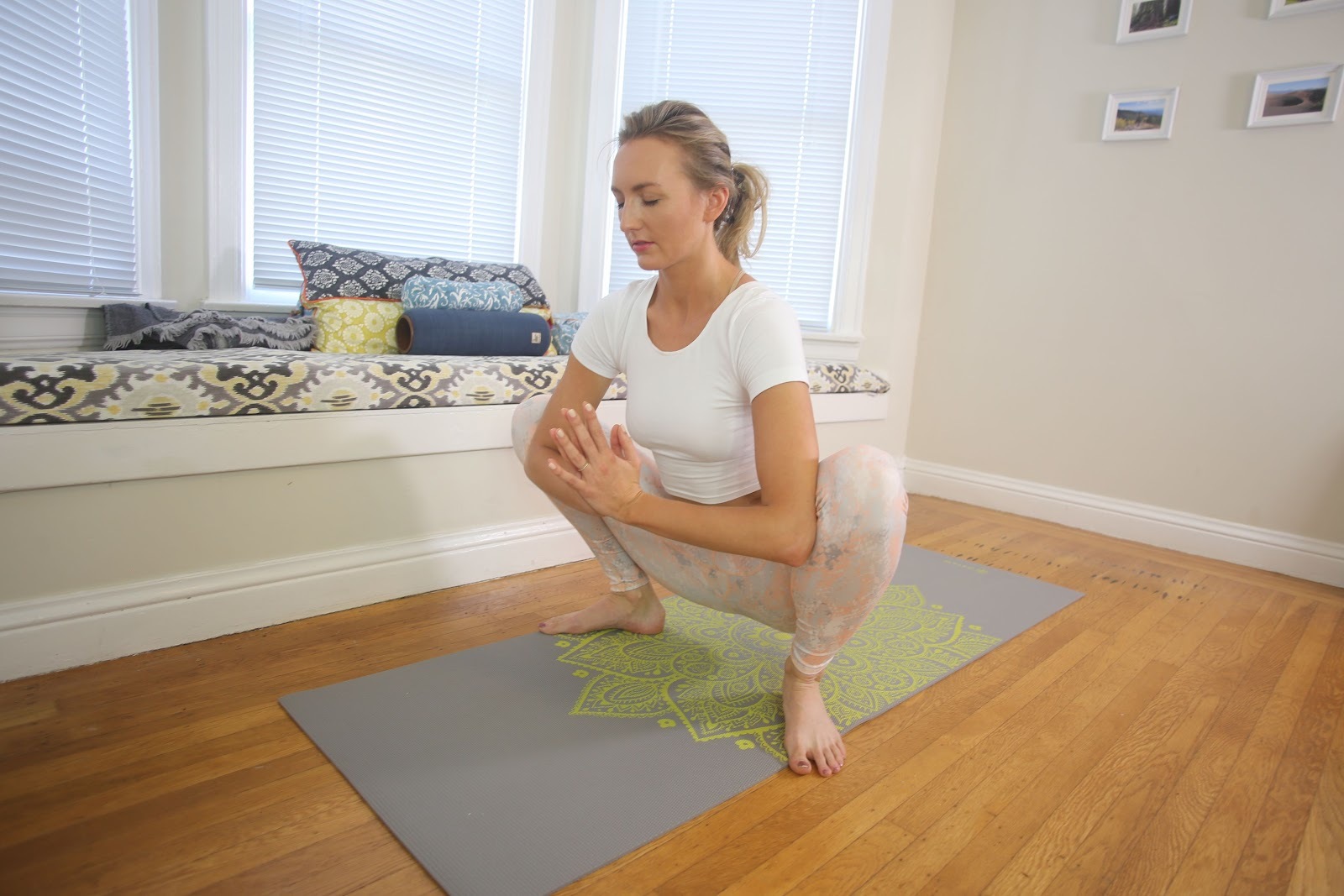If you’ve ever been told to “squeeze your pelvic floor!” or “do your Kegels!” and thought, there has to be more to this, you’re right.
Let me take you into a deeper, softer, and more somatically attuned way of working with the body’s root: Advanced Pelvic Floor Breathing.
This breathwork practice invites you to listen to your body in a new way. Instead of constant contraction, we’re exploring range — how the pelvic floor can relax and expand just as much as it can engage and lift.
It’s breath as healing, breath as movement, breath as a way to meet the deep stories your body may be holding, especially those stored in the pelvic muscles and deep abdominal muscles.
This is not just about breathing. This is about practicing breathing exercises that restore pelvic floor health, regulate your nervous system, and reduce psychological stress and chronic pain.
What Is Pelvic Floor Breathing?

Pelvic floor breathing is a therapeutic breath practice that connects your inhale and exhale to the natural movements of the pelvic floor muscles.
On the inhale, the diaphragm contracts and moves downward, creating space in the abdominal cavity and gently pressing the abdominal contents down.
The pelvic diaphragm responds by lengthening and relaxing.
On the exhale, the diaphragm relaxes and lifts, and the pelvic floor muscles contract upward.
This movement is more than anatomy—it’s diaphragmatic motion that regulates intra-abdominal pressure, supports postural control, and encourages healthier breathing patterns.
When I practice this with awareness, it becomes a rhythmic, looping current of energy that softens tension, releases trauma, and restores balance to the root of the body.
This isn’t your average breathwork. It’s a somatic tool for grounding, activating, and re-patterning your nervous system from the ground up.
Before I teach you this, first, let’s understand…

Anatomy of the Breath: Diaphragms, Fascia & the Pelvic Floor
Let’s start by breaking down what we really mean by “diaphragms” in the body. Spoiler alert: there’s more than just the one under your lungs!
The Three Diaphragms of the Body
To truly understand advanced pelvic floor breathing, we have to think beyond one diaphragm. There are actually three diaphragms in the body:
- The cranial diaphragm (base of the skull)
- The respiratory diaphragm (beneath the lungs)
- The pelvic diaphragm (aka your pelvic floor)
These diaphragms move in concert with each other during diaphragmatic breathing exercises. As you inhale slowly, the diaphragm moves with a gentle downward movement that impacts the abdominal wall muscles, deep abdominals, and muscles surrounding the lumbar spine. The pelvic floor muscles relax to accommodate this shift. As you exhale slowly, the diaphragm relaxes, pressure lowers, and the pelvic floor lifts.
The Role of Fascia in Breath and Emotion
Your fascia — the connective tissue that weaves through your entire body — plays a huge role here.
It links your pelvic floor to your abdominal muscles, diaphragm, rib cage, and even your jaw.
This fascial web is why pelvic floor breathing impacts not just your core, but your mood, your stress levels, even your voice.
Common Pelvic Floor Dysfunctions (and Why Kegels Alone Don’t Work)
Let’s talk symptoms. I know this part isn’t glamorous, but it’s incredibly validating for so many of us to realize we’re not alone—and we’re not broken.
Signs You May Have Pelvic Floor Dysfunction

If you’re leaking pee when you sneeze, struggling postpartum, or dealing with painful sex, chances are you have some degree of pelvic floor dysfunction — but not necessarily a weakness.
Often, it’s a lack of mobility, coordination, or the ability to relax.
Here are some signs of pelvic floor problems:
- Pain or discomfort during urination
- Trouble starting or stopping your urine stream
- A feeling of heaviness or prolapse in the pelvis
- Pelvic pain during sex or movement
- Postpartum pelvic changes
- Low back pain that won’t quit
Why Kegels Aren’t Always the Answer
Many women are told to “just do Kegels,” as your pelvic floor exercises. But research and pelvic floor physical therapists (like Dr. Brianne Grogan) agree: release must come before strengthening. A tight muscle can’t engage properly. First we soften. Then we strengthen.
Kegels alone don’t train the body to coordinate pelvic floor function with the breath or restore healthy breathing patterns, moving from shallow breathing to nice deep breaths. That’s where diaphragmatic breathing and pelvic floor breath exercises come in to help you regain your pelvic health.
Awaken Your Feminine Energy with my Somatic Self Healing Masterclass (usually $67) FREE👇

FREE Feminine Form Embodied Yoga Masterclass (usually $67) Unleashing Pleasure + Intuitive Movement on the Mat

The Advanced Pelvic Floor Breath Explained
Now that we’ve covered what the breath does and why it matters, let me walk you through the exact technique I teach in my trainings.
Visualizing the Breath: Umbrellas, Claws, and Mossy Cushions
This is my signature approach, and I often teach it in my somatic yoga and coaching programs. Here’s how it works:
- Breathe slowly as you inhale: Feel how the diaphragm moves. Puff the belly out (hello, belly breathing!). Imagine your pelvic floor expanding and pressing down into the earth. Visualize it like an upside-down umbrella opening in all directions: front, back, sides. Picture a soft mossy cushion beneath you, and imagine your pelvic floor leaving an imprint.
- Exhale slowly: Draw the pelvic floor up and in, as if it’s a gentle arcade claw siphoning energy up the spine. Let your upper chest, shoulders, and face stay soft. Imagine white or golden light traveling up through the trunk to the brain.
- Optional posture tips: Practice seated cross-legged or with knees bent and feet flat on the floor. Sitting on a cushion helps give you tactile feedback into the lower abdomen and pelvic diaphragm.
- Optional movement: Add a subtle pelvic rock. Tip slightly forward as you inhale. Gently rock back on the exhale, syncing with the natural diaphragmatic motion.
This breath loops energy through the body and balances the downward current (apana) with the rising one (prana). It’s both grounding and activating.
Practice this breath with me with drums and music inside my Somatic Yoga Certification.
When to Modify or Avoid This Breathing Exercise
I don’t recommend this breath during pregnancy, menstruation, or active trauma recovery. If that’s you, start with basic deep breathing and consult a healthcare provider or pelvic floor PT.
Mula Bandha and the Myth of Constant Contraction

Let’s be real: Mula Bandha is one of the most misunderstood elements of yoga. I used to teach it like a constant squeeze too. But what I’ve learned through somatic work changed everything.
Redefining the Root Lock in My Trainings
In many yoga styles, Mula Bandha is taught as a constant “root lock” — a nonstop squeezing up and in. But this misses the bigger picture.
True Mula Bandha is energetic. It’s subtle. It happens most powerfully on the exhale and should be followed by a full release. Without this full range, you’re simply building more tension in the core muscles and pelvic floor.
In my Yoga Teacher Trainings, Mula Bandha is redefined:
- Not just a Kegel (it’s deeper, more nuanced)
- Not always appropriate (especially for trauma survivors or postpartum bodies)
- Best practiced slowly, with a diaphragmatic breathing technique
Mula Bandha done right is more like a blossom and gather, not a white-knuckle squeeze.
Take my quiz to find out which YTT is best for you:
Trauma, Emotion & the Pelvic Bowl
Our pelvic floor is our body’s emotional basement. According to Dr. Bri, it’s often the first area to tighten in response to stress — even faster than your shoulders.
Why?
- The pelvic floor muscles are deeply connected to the fight/flight response
- They’re part of your deep core and trunk stabilization system
- They store memories, tension, and emotions—especially when we’re taking shallow breaths or in chest breathing mode
Most of us don’t feel into this area until something is wrong. Let this be your permission slip to reconnect now, not later.
Practice This: Somatic Breathwork for Pelvic Floor Healing

Try this short somatic breath practice:
- Sit on a soft cushion in a resting position with knees bent and feet flat, or lie down with your upper abdomen relaxed.
- Place one hand on your belly and one on your lower ribs.
- Inhale slowly: Feel your ribs expanding, abdominal contents descending, and your pelvic floor moving down.
- Exhale slowly: Lift from the coccygeus muscle and gently draw your pelvic floor and transverse abdominis upward.
- Optional: Add slow hip circles to help release deep-seated tension in the muscles surrounding your hips and pelvis.
You can do this lying down as well, with fingers gently resting on the perineum for biofeedback.
This breathing not only improves pelvic floor function, but also supports blood pressure, reduce stress, and brings awareness to the abdominal wall muscles, accessory muscles, and expiratory muscles involved in each breath.
This practice is deeply regulating for the nervous system, and when done mindfully, it can bring up emotions. Let them come. Let them move.
Final Thoughts: Gentle Power at the Root of Your Being
Healing your pelvic floor isn’t about doing more. It’s about doing less, with more presence.
Through diaphragmatic breathing, core muscle coordination, and mindful movement, we reawaken the body’s most foundational support system. Whether you’re postpartum, managing chronic pain, or just looking to reconnect with your root energy, this breath is a pathway home.
Your body remembers how to heal. You just have to slow down long enough to listen.
I hope you enjoyed the tutorial video I put here. To practice this breath with me with drums and music, explore my Somatic Yoga Certification or take a more traditional yoga approach with my Yoga for the Pelvic Floor free blog.
Stay rooted. Stay gentle. You’ve got this.
Next Steps
- Take a deep dive into embodiment and somatic yoga with my Somatic Yoga certification program.
- If you’re interested in practical kriya yoga as a way to improve your daily life and relationships, check out my Yoga for Self Mastery course.

FREE Embodied Yoga Workshop (usually $67) Somatic Techniques & Cord Cutting Ritual

YOU MIGHT ALSO LIKE
- Advanced Pelvic Floor Breathing: A Somatic Approach to Healing
- Somatic Yoga For Yoga Teachers: Everything You Need to Know in 10 Steps
- How Somatic Shaking Can Release Tension and Reset Your Nervous System
- Discover Somatic Pilates: Enhance Your Body Awareness and Flexibility
- Kundalini for Feminine Energy: Ignite Your Creative Power and Passion
- 6 Effective Somatic Yoga for Neck and Shoulders
- How to Teach Somatic Yoga: A Practical Guide for Instructors
- The Best Somatic Exercises for Grief: Find Healing Through Movement
- The Best Somatic Exercises for Anger Management and Emotional Release
- How to Teach Somatic Yoga to Beginners
- Best Somatic Yoga Poses for Emotional Release and Healing
- The Rich History of Somatic Yoga: From Origins to Modern Practices
- Somatic Yoga for Stress: Effective Techniques to Find Calm and Relief
- The Perfect Yoga Practice For Your Menstrual Cycle Energy Levels
- Enhancing Your Practice: The Benefits of Yoga and Nature Connection










